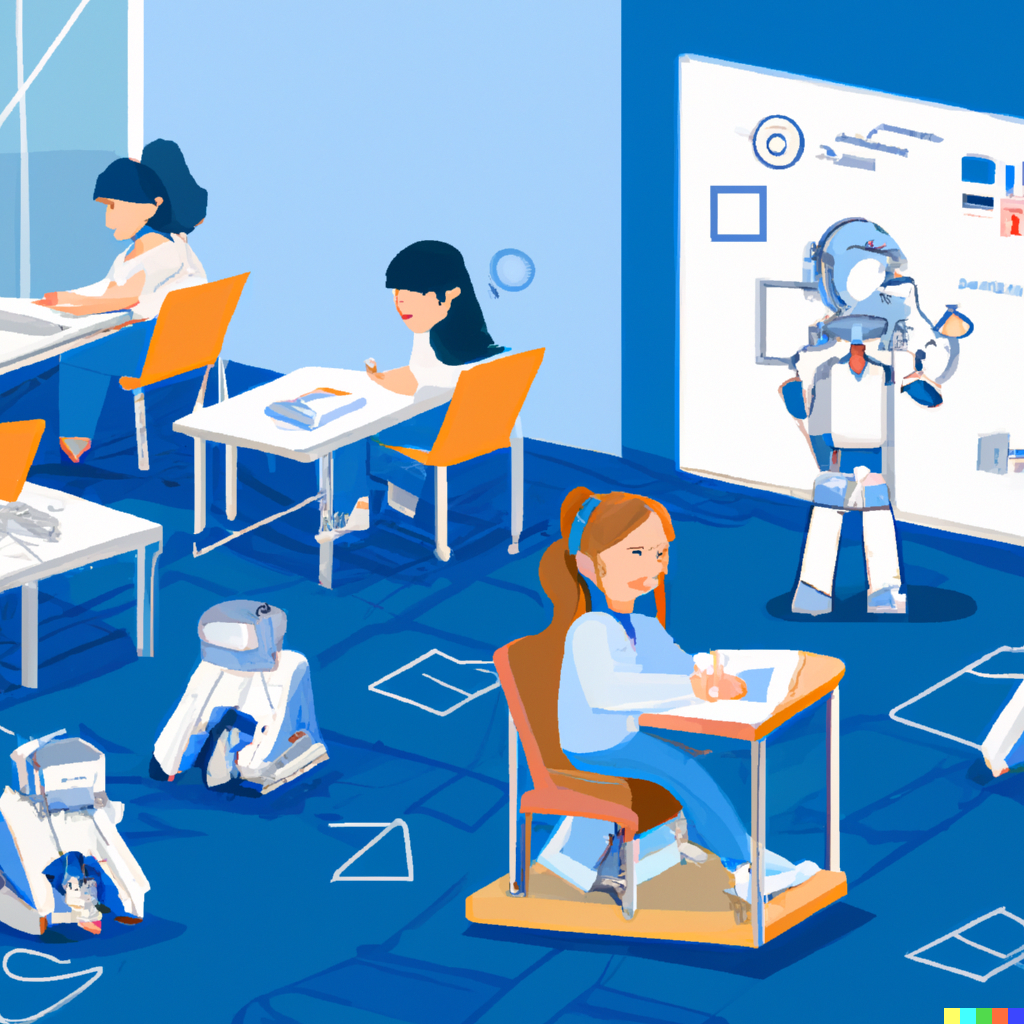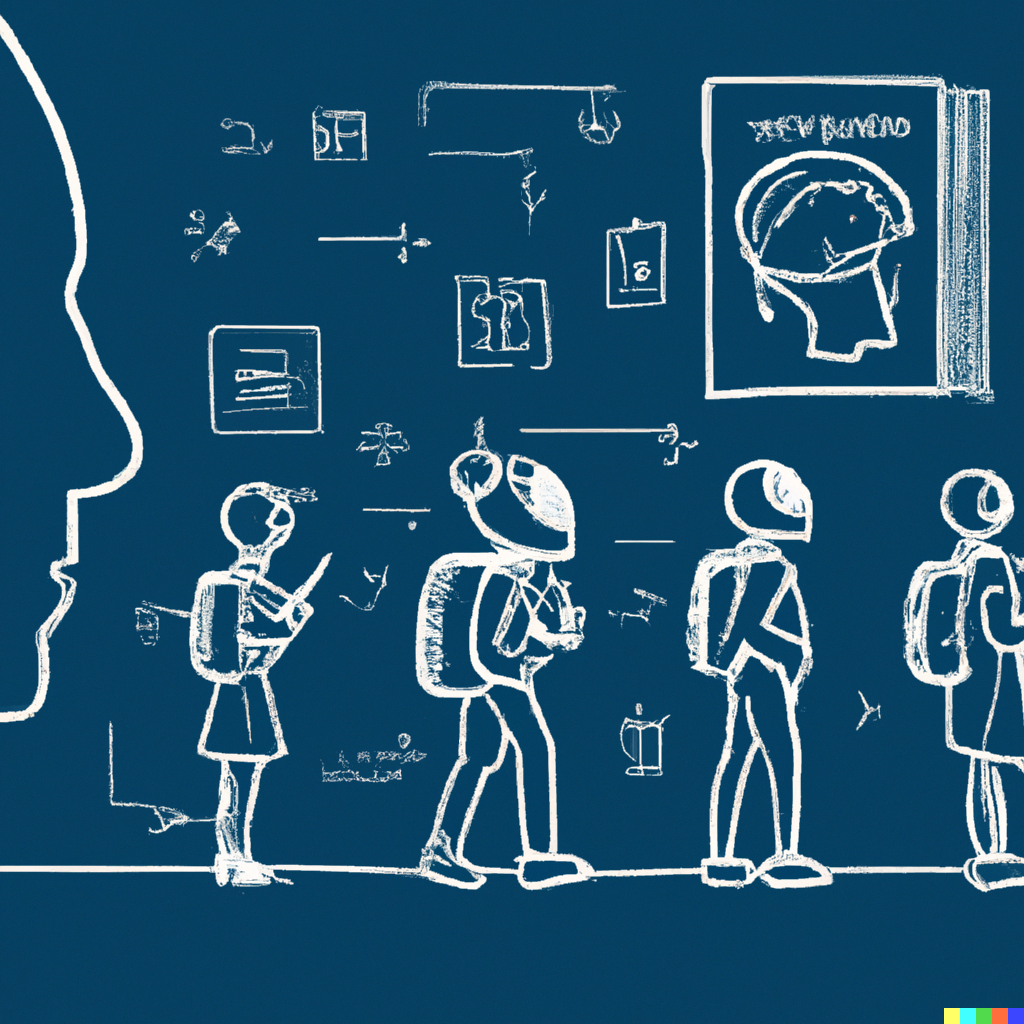Surrey students explore the next digital frontier - artificial intelligence
 AI image generated by DALL-EWith 2023 being the breakout year for the advent of artificial intelligence (AI), educators around the world are unsure of what to make of what may very well be the next big disruptor.
AI image generated by DALL-EWith 2023 being the breakout year for the advent of artificial intelligence (AI), educators around the world are unsure of what to make of what may very well be the next big disruptor.
Similar to the impacts the internet and smartphones have had on the world, many are looking at artificial intelligence as the next generation-defining technology that will radically change the course of everyday life.
While the potential pros and cons of AI remain up for debate, a few educators in Surrey are already making use of the technology in classrooms, using it not only as a tool to help focus thoughts and processes, but to also further develop critical thinking skills in students.
One such user is Sullivan Heights physics teacher Will Hemrick, who began exploring the use of AI out of a personal curiosity.
After initially experimenting with AI’s ability to create quizzes, Hemrick realized an even greater potential of the technology’s use would be to explore student literacy of how to make use of it.
“Scientific literacy is very important and that’s something I always try to push,” said Hemrick. “AI has the potential to become a very big part of how things are done and so giving students the ability to navigate that is very important.”
Robots aren’t always right
One of the things Hemrick has had his students explore is the limitations of the technology.
While there have been countless stories of students trying to pass off AI-written essays as their own, there are still fundamental gaps in knowledge and imperfect behavioural patterns that can often appear in generated content.
“I’ll have my students put in requests on things like evidence reasoning about the direction of motion of the African plate and then we’ll dissect the responses,” explained Hemrick.
Upon closer examination and breaking down the different reasons given by the AI, Hemrick said his students quickly realized that AI isn’t the be-all end-all assignment generator that some have claimed it to be.
“On the surface, it looked like it knew what it was talking about, but as we dove into the data it was using, they found that the reasoning or data behind its responses wasn’t necessarily the best,” he explained. “So that really challenged their assumptions that anything done by a computer is correct and better and allows them to be critical thinkers when looking at would-be easy solutions.”
Fellow Sullivan Heights educator Scott Rowell agrees.
 AI image generated by DALL-E
AI image generated by DALL-E
Humans still required
A business ed and digital design teacher, Rowell said one of the unique uses he and his students have had for AI is its use as a tool for coding, something he and his students have been experimenting with in this most recent semester.
“It’s been really interesting watching our students put it through its paces,” said Rowell. “It’s been really good at writing modular snippets of code, but where it begins to run into issues is when you begin to ask it to solve larger-scale problems.”
And that, said Rowell, is where the human expertise is needed.
“It’s still very much up to the user to ensure that the request is detailed enough for the AI to compose something useful and for the use to have the knowledge to be able to review the result,” he said.
What lies ahead
With AI also being used and experimented with in other fields like visual and creative studies, Rowell noted that some of his students have been questioning the future of their studies.
“I've had students actually ask me directly, should we even bother studying things like coding in university?” he explained. “Right now, we’re not at the point where it's going to replace a coder, and I don't know if that's ever going to happen.”
As for what next year may hold and how use of AI may change Rowell said there is no prescribed course for what may come next.
“We’re entering this new paradigm of AI an innovation together and so us instructors are learning about it alongside our students,” he said.
“We’re on this journey together and so who knows what the future may hold?”

